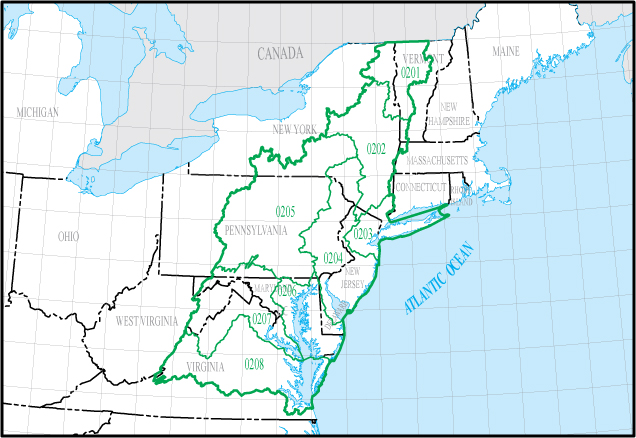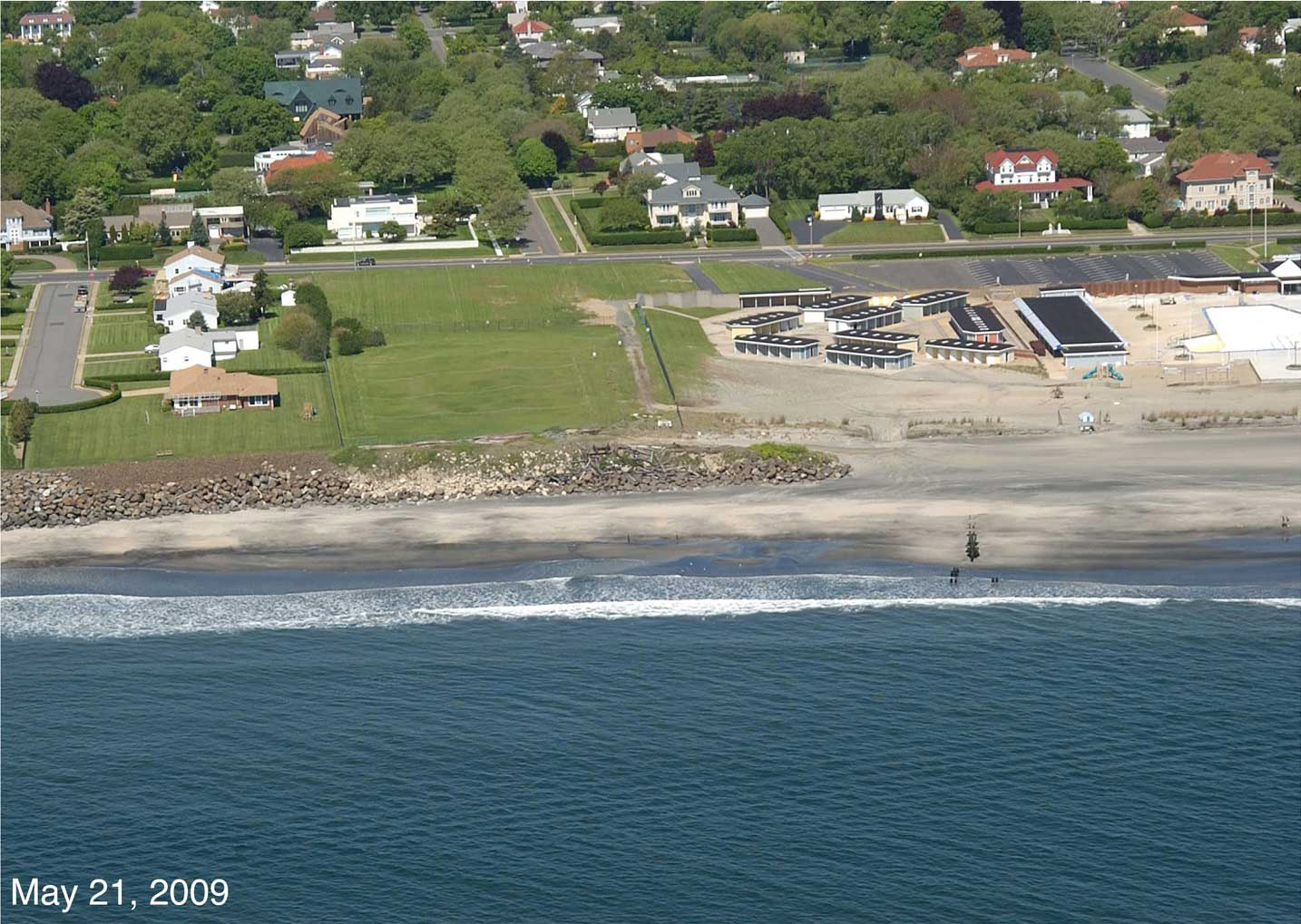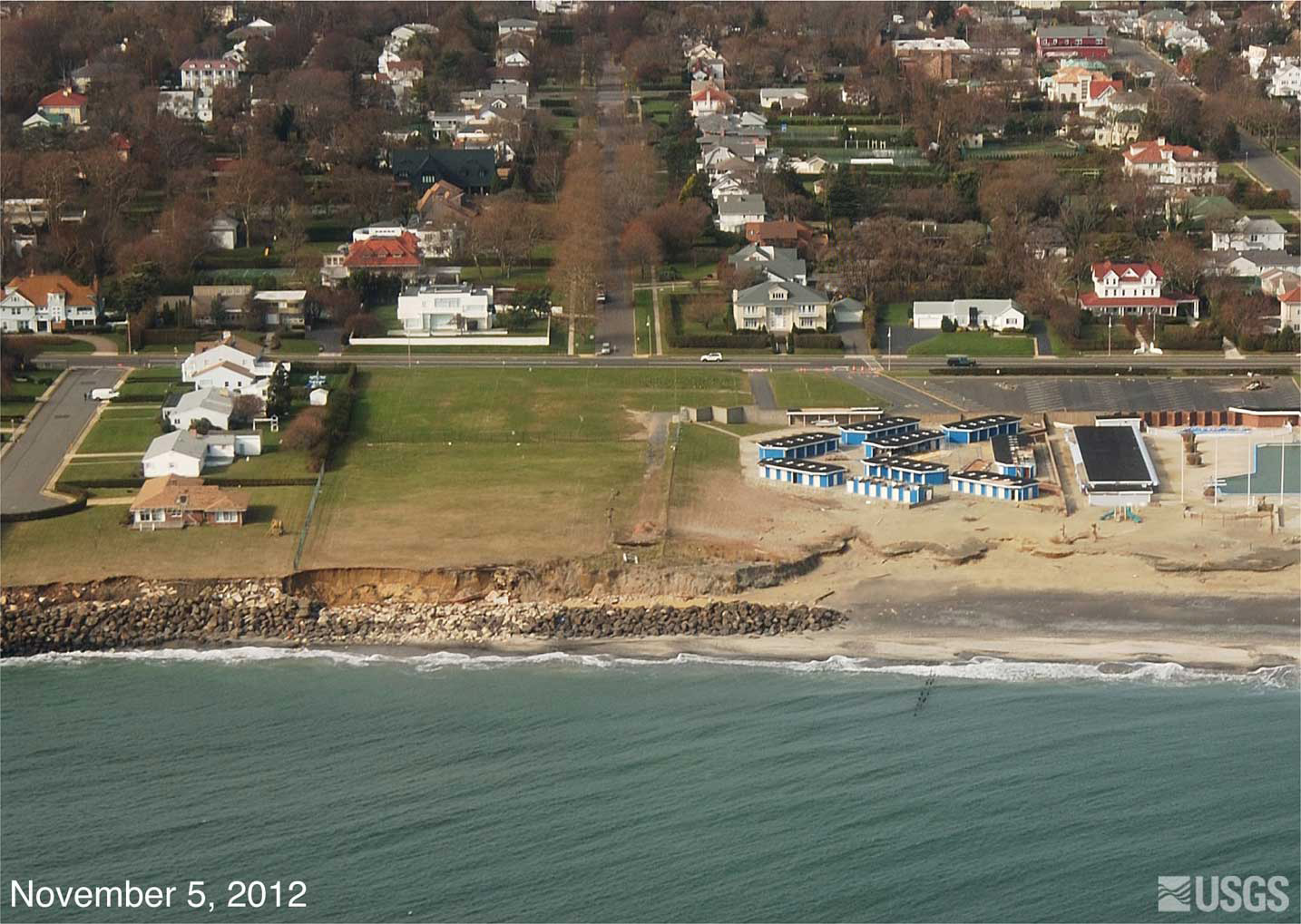Ocean Ecosystem and Resources : Characterizing the Mid-Atlantic Ocean Ecosystem
Human Settlements Relative to the Ocean
A Growing Population
In 2010, 39 percent of the nation’s population lived in coastal shoreline counties (NOAA State of the Coast 2010). The Mid-Atlantic’s coastal counties are currently home to some 34 million people (NOEP 2015). The population in Mid-Atlantic coastal counties was expected to grow 8% from 2010 to 2020 (U.S. Census Bureau 2010).
Major Population Centers and Densely Populated Watersheds
Human settlements have drastically changed the Mid-Atlantic coastal landscape over time, and continue to do so. The Mid-Atlantic region is home to the capital of the U.S. (Washington, DC), the largest city and financial center of the country (New York, NY), and the most densely populated state (New Jersey). Other major metropolitan coastal areas include Philadelphia, Baltimore, and Virginia Beach/Norfolk.
Mid-Atlantic watersheds are some of the most developed in the country. They include the Hudson River watershed, the Delaware Estuary watershed, and the Chesapeake Bay watershed.
Coastal Erosion and Beach Nourishment
Erosion is a natural process along the coastline, and 68 percent of beaches in the Mid-Atlantic and New England are eroding (USGS). The dense and growing population along the coastline has led to construction of seawalls, jetties, and groins, also known as shoreline hardening, intended to reduce coastal erosion. Over 12 percent of Mid-Atlantic shorelines are hardened, which is less than the national average of 14 percent (Gittman et al. 2015). Another commonly used method to counteract erosion is to add more sand in places where erosion has removed sand from beaches. This process, called “beach nourishment”, often involves dredging sand from the seabed elsewhere and then transporting it to the beach. In the state of New Jersey, approximately $1.5 billion has been spent on beach nourishment projects since 1936.



